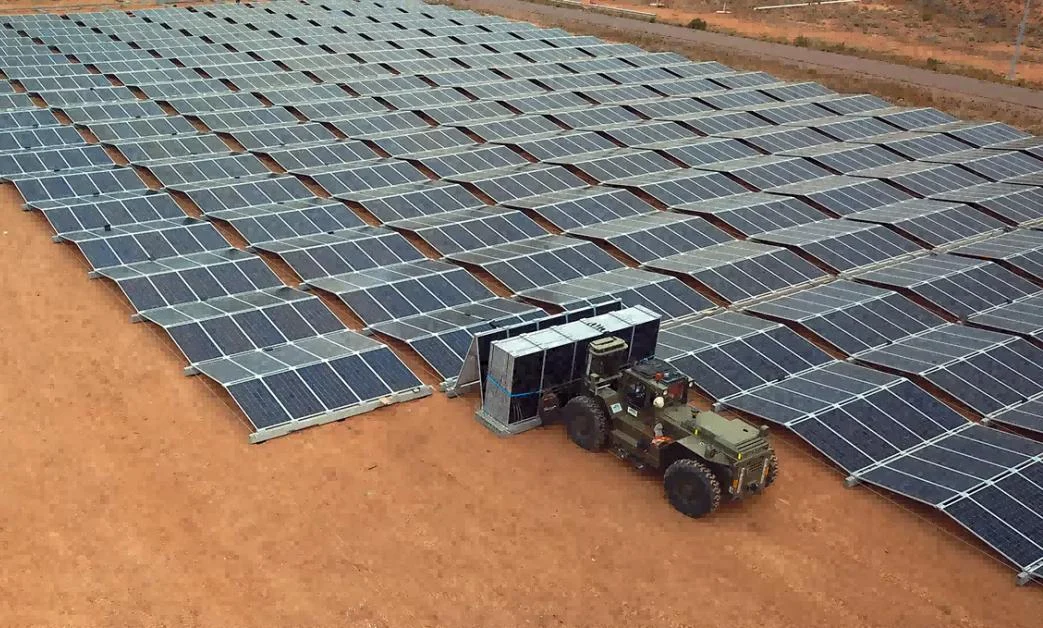2025-05-19
The energy trend in the world is under a profound shift that has not occurred for a century. With the disadvantage of traditional sources of energy such as coal and oil growing more prominent by the day, China's solar industry has grown in a miraculous manner and scale, not just reshaping China's energy system but also becoming the driving force of the world green revolution. From China's "Blue Great Wall" in the desert to rooftop power stations in tens of thousands of homes, from Southeast Asian production bases to African villages without the grid, China's photovoltaic sector is remaking the world in new ways.

Its near monopoly market share is the first indicator of China's global influence on the photovoltaic sector. As of 2024, China's market share of the world's photovoltaic products will be 85%, while the capacities' share of major links such as silicon wafers, cells, and modules will be more than 90%. This benefit not only results from the scale effect, but also takes advantage of the "double crush" of technology and cost - the price of photovoltaic power generation has declined 90% in the last ten years, and the lowest cost per kilowatt-hour (0.1-0.2 yuan per kilowatt-hour) in the world has made coal-fired power uncompetitive. According to a study conducted by McKinsey in America, China's photovoltaic industry technology is superior to that of European and American countries by five years or more, and the degree of automation and quality of products have achieved world-class standards.
Such superiority has directly transformed the global energy investment logic. The International Energy Agency calculates that by 2050, the global average annual increase of photovoltaic installations will be 1,500 to 2,000 GW. Meanwhile, China's "new three" (photovoltaic, lithium battery, and electric vehicle) industrial chains' overseas layout will drive the globalized scale of 50 to 100 trillion yuan and even challenge the US dollar dominance. To economies in development such as Saudi Arabia and Brazil, Chinese firms have helped the nations bypass the fossil energy era and proceed directly to the age of clean energy by embracing an extensive "photovoltaic + energy storage" strategy.
The transformation of China's photovoltaic industry into international scales is better understood through its role as a facilitator of climate action and developing countries. Eric Solheim, former UN Under-Secretary-General, declared: "China's solar industry is a gift to mankind." Take the Kubuqi Desert in Inner Mongolia as an example. The "Junma Power Station" with 200,000 photovoltaic panels not only generates over 1 billion kilowatt-hours of electricity annually, but also increases vegetation coverage rate from 5% to 35%, achieving win-win effect in sand control and electricity generation. Such a "photovoltaic +" approach is being replicated globally: in Pakistan's shantytowns, Chinese photovoltaic panels are used to reduce the price of electricity, and in Brazil's rainforest region, distributed photovoltaic power is used to reduce deforestation.
For developing nations that do not have energy, China's photovoltaic approach is one that opens the doorway to development. Namibia is self-sufficient in power for the first time with a 100-megawatt solar-powered power station built by Chinese investors. Chinese photovoltaic products have been supplying clean electricity to 60 million Africans who were previously denied electricity. Bloomberg New Energy estimates it will cost 215 trillion US dollars to achieve carbon neutrality for the world, and Chinese photovoltaic technology has reduced the threshold by at least 30%.
Despite the rosy prospects, the way of Chinese photovoltaic industry's globalisation also has a number of obstacles. Up to 3,500% tariffs have been imposed by the United States on Southeast Asian photovoltaic products. The European Union requires local production capacity to be 40%. Restrictive trade measures compelled Chinese businesses to accelerate their "island-hopping tactics" - Longi has built a factory in Oman and JinkoSolar has schemed in Saudi Arabia, hedging risk through diversification. Simultaneously, technological upgrading was the key to breaking the bottle-neck: TOPCon cell mass production efficiency crossed 26.5%, while laboratory efficiency of perovskite tandem tech reached 33.7%. These innovations have enabled China's photovoltaic sector to maintain a generational advantage.
The domestic market also experiences radical changes. Under the influence of the pressure of the slowdown of the growth rate of distributed photovoltaic power and the reform of land policies, offshore photovoltaic power and grid-connected energy storage have become new growth points. Shanghai, Jiangsu and other places have plotted over 30GW of offshore photovoltaic projects. The grid-forming energy storage technology proposed by the likes of Huawei is capable of actively stabilizing the grid frequency and eradicating the problem of new energy grid connection.
Looking back in time, coal dominated industrial civilization and oil controlled geopolitics. And now, China's photovoltaic industry is writing a new energy chapter - it is turning deserts into "blue oceans", lighting up hope in poor villages, and achieving global carbon neutrality from fantasy to reality. As China Photovoltaic Industry Association explained, "The trade war won't bring down China's photovoltaic industry; it will only make it stronger." Such "revolution of light" is not just about energy, but about human civilization in the future. As every photovoltaic panel cools the earth, China's photovoltaic industry not only reconstructs the energy world, but also the development model of the entire world.